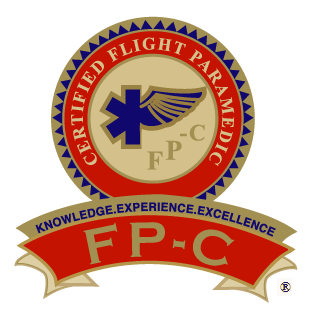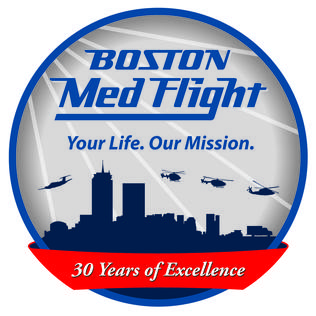
Emergency medical services (EMS), also known as ambulance services or paramedic services, are emergency services that provide urgent pre-hospital treatment and stabilisation for serious illness and injuries and transport to definitive care. They may also be known as a first aid squad, FAST squad, emergency squad, ambulance squad, ambulance corps, life squad or by other initialisms such as EMAS or EMARS.

An emergency medical technician is a medical professional that provides emergency medical services. EMTs are most commonly found serving on ambulances and in fire departments in the US and Canada, as full-time and some part-time departments require their firefighters to be EMT certified.

A paramedic is a healthcare professional trained in the medical model, whose main role has historically been to respond to emergency calls for medical help outside of a hospital. Paramedics work as part of the emergency medical services (EMS), most often in ambulances. They also have roles in emergency medicine, primary care, transfer medicine and remote/offshore medicine. The scope of practice of a paramedic varies between countries, but generally includes autonomous decision making around the emergency care of patients.

A paramedic is a healthcare professional, providing pre-hospital assessment and medical care to people with acute illnesses or injuries. In Canada, the title paramedic generally refers to those who work on land ambulances or air ambulances providing paramedic services. Paramedics are increasingly being utilized in hospitals, emergency rooms, clinics and community health care services by providing care in collaboration with registered nurses, registered/licensed practical nurses and registered respiratory therapists.

In the United States, the paramedic is a allied health professional whose primary focus is to provide advanced emergency medical care for patients who access Emergency Medical Services (EMS). This individual possesses the complex knowledge and skills necessary to provide patient care and transportation. Paramedics function as part of a comprehensive EMS response under physician medical direction. Paramedics often serve in a prehospital role, responding to Public safety answering point (9-1-1) calls in an ambulance. The paramedic serves as the initial entry point into the health care system. A standard requirement for state licensure involves successful completion of a nationally accredited Paramedic program at the certificate or associate degree level.
Advanced Emergency Medical Technician - Critical Care (AEMT-CC) is a former Emergency Medical Services (EMS) certification that was unique to New York. The curriculum for AEMT-CC's in New York was similar to that of the national standard EMT-I/99 but with a broader scope of practice. EMT-CCs are fully classified as Advanced Life Support (ALS) providers within New York and are trained in advanced airway management, including intubation, IV fluid administration, cardiac monitoring, cardiac pacing, and both synchronized and unsynchronized cardioversion, and medication usage/administration in adult and pediatric patients.

A certified flight paramedic (FP-C) is a person who has met the advanced certification requirements for flight paramedics established for this designation by the International Board of Specialty Certification (IBSC), a not-for-profit organization responsible for the administration and development of specialty certification exams for critical care professionals. The FP-C exam was the first specialty paramedic certification offered by the Board for Critical Care Transport Paramedic Certification in 2000. This certification is designed for experienced paramedics who have demonstrated advanced knowledge of critical care medicine.

Critical care nursing is the field of nursing with a focus on the utmost care of the critically ill or unstable patients following extensive injury, surgery or life-threatening diseases. Critical care nurses can be found working in a wide variety of environments and specialties, such as general intensive care units, medical intensive care units, surgical intensive care units, trauma intensive care units, coronary care units, cardiothoracic intensive care units, burns unit, paediatrics and some trauma center emergency departments. These specialists generally take care of critically ill patients who require mechanical ventilation by way of endotracheal intubation and/or titratable vasoactive intravenous medications.

Emergency nursing is a specialty within the field of professional nursing focusing on the care of patients who require prompt medical attention to avoid long-term disability or death. In addition to addressing "true emergencies," emergency nurses increasingly care for people who are unwilling or unable to get primary medical care elsewhere and come to emergency departments for help. In fact, only a small percentage of emergency department (ED) patients have emergency conditions such as a stroke, heart attack or major trauma. Emergency nurses also tend to patients with acute alcohol and/or drug intoxication, psychiatric and behavioral problems and those who have been raped.

Boston MedFlight (BMF) is a non-profit organization that provides emergency scene response and emergency interfacility transfer in Eastern Massachusetts at the Critical Care level, which is higher than a paramedic-level ambulance crew's certification, using both aircraft and ground ambulances.
A flight paramedic is a paramedic who provides care to sick and injured patients in an aeromedical environment. Typically a flight paramedic works with a registered nurse, physician, respiratory therapist, or another paramedic. Flight paramedics must have an advanced medical knowledge along with years of clinical experience. Flight paramedics in the United States usually hold certifications such as the FP-C or the CCP-C, while in countries like the United Kingdom, they are typically required to hold a postgraduate certificate in critical care as a minimum, with many holding a master's degree in advanced practice or aeromedical critical care.
An advanced emergency medical technician is a provider of emergency medical services in the United States. A transition to this level of training from the emergency medical technician-intermediate, which have somewhat less training, began in 2013 and has been implemented by most states. AEMTs are not intended to deliver definitive medical care in most cases, but rather to augment prehospital critical care and provide rapid on-scene treatment. AEMTs are usually employed in ambulance services, working in conjunction with EMTs and paramedics; however they are also commonly found in fire departments and law enforcement agencies as non-transporting first responders. Ambulances operating at the AEMT level of care are commonplace in rural areas, and occasionally found in larger cities as part of a tiered-response system, but are overall much less common than EMT- and paramedic-level ambulances. The AEMT provides a low-cost, high-benefit option to provide advanced-level care when the paramedic level of care is not feasible. The AEMT is authorized to provide limited advanced life support, which is beyond the scope of an EMT.
Emergency Medical Technician is the entry level of Emergency Medical Technician in the United States.
In the United States, the licensing of prehospital emergency medical providers and oversight of emergency medical services are governed at the state level. Each state is free to add or subtract levels as each state sees fit. Therefore, due to differing needs and system development paths, the levels, education requirements, and scope of practice of prehospital providers varies from state to state. Even though primary management and regulation of prehospital providers is at the state level, the federal government does have a model scope of practice including minimum skills for EMRs, EMTs, Advanced EMTs and Paramedics set through the National Highway Traffic Safety Administration (NHTSA).
Emergency medical services in Sri Lanka is being established using a public/private system aimed at the provision of emergency ambulance service, including emergency care and transportation to hospitals. The Pre-Hospital Care Committee is part of the Trauma Secretariat of the Sri Lanka Ministry of Healthcare and Nutrition and was established following the 2004 tsunami. The goal of the Pre-Hospital Care Sub-Committee is “During this generation and continuing for future generations, everyone in Sri Lanka will have access to trained pre-hospital medical personnel, ambulances are available to transport the sick and injured safely to hospitals, complications from harmful or inadequate pre-hospital care is eliminated so physician and nursing personnel at hospitals are delivered patients they are able to professionally treat and rehabilitate back to society as contributing citizens.” Pre-Hospital care is an essential, core component of trauma system.
68W is the Military Occupational Specialty (MOS) for the United States Army's Combat Medic. 68Ws are primarily responsible for providing emergency medical treatment at point of wounding on the battlefield, limited primary care, and health protection and evacuation from a point of injury or illness. 68Ws are certified as Emergency Medical Technicians (EMT) through the National Registry of Emergency Medical Technicians (NREMT). However, 68Ws often have a scope of practice much wider than that of civilian EMTs. This specialty is open to males and females with minimum line scores of 107 GT and 101 ST on the Armed Services Vocational Aptitude Battery (ASVAB).

Air medical services are the use of aircraft, including both fixed-wing aircraft and helicopters to provide various kinds of medical care, especially prehospital, emergency and critical care to patients during aeromedical evacuation and rescue operations.
A Critical Care Transport Nurse is a Registered Nurse specialized in care in the pre-hospital setting. These are mostly air-medical personnel or critical care transport providers with specialized training and experience in pre-hospital care. Such nurses are required by their employers to seek additional certifications beyond basic nursing licensure and are often required to have three years (minimum) of full-time experience in emergency and/or intensive care.
Scottish Specialist Transport and Retrieval (ScotSTAR) is the Scottish national service for adult, paediatric and neonatal patients. The service is run by the Scottish Ambulance Service and brings together NHS Scotland's three specialist transport and retrieval services: the Scottish Neonatal Transport Service (SNTS), the Transport of Critically Ill and Injured Children Service and the Emergency Medical Retrieval Service (EMRS). The service operates from a bespoke base near Glasgow and expects to be able to cater for 2,200 critically ill children and adults every year.
Association of Critical Care Transport. (2020). Critical care transport standards (Vol. 1). Platte City, MO: Association of Critical Care Transport.
Scuissiato, D. R., Boffi, L. V., Rocha, R. D., Montezeli, J. H., Bordin, M. T., & Peres, A. M. (2012). Understanding on-board nurses about their role in the multiprofessional aeromedical transport team. Brazilian Journal of Nursing, 65(4), 614–620. doi:10.1590/s0034-71672012000400010









